
- Shandong Loyal Industrial Co.,Ltd.
- Macaroni Production Machine Instant Noodle Machine Biscuit Making Machine
Home> Company News> Everything You Need To Know About snack extruder machine

Everything You Need To Know About snack extruder machine
2025-02-05 17:22:07Advanced Technology in Snack Extruder Machines
Snack extruder machines, also known as food extruder machines specifically designed for snacks, have incorporated advanced technology to enhance their functionality and efficiency. Here's an overview of some of the advanced technologies utilized in snack extruder machines:
1. High-Precision Feeding Systems
Automated Feeding: Many modern snack extruder machines are equipped with automated feeding systems that ensure precise and consistent feeding of raw materials into the extruder. This helps in maintaining uniform product quality and consistency.
Weighing and Metering: Advanced weighing and metering systems are used to accurately measure and control the flow of ingredients into the extruder. This ensures the correct proportions of each ingredient, which is crucial for achieving the desired product texture, flavor, and nutritional profile.
2. Twin-Screw Extrusion Technology
Side Forced Feeding: Twin-screw extruder machines often adopt side forced feeding technology, which increases the overall feed efficiency and productivity. The design of the feed inlet and the use of rectangular cross-sections further enhance feeding capacity.
Self-Cleaning Capabilities: The intermeshing of the twin screws creates a continuous space curve with uniform gaps, which helps in cleaning the screw surfaces and preventing material residue.
Kneading Blocks: Kneading blocks within the extruder provide internal mixing and kneading of the materials, improving the quality of the extruded snack.
3. Modular Design and Flexibility
Modular Components: The modular design of many snack extruder machines allows for easy replacement and customization of components such as dies and screws. This flexibility enables manufacturers to produce a wide range of snack shapes and sizes simply by changing the模具.
Scalability: Extruder machines come in various sizes and capacities, allowing manufacturers to scale up or down their production as needed. This scalability is crucial for meeting fluctuating market demands.
4. Advanced Control Systems
Automated Control Systems: Modern snack extruder machines are equipped with advanced control systems that monitor and regulate various parameters such as temperature, pressure, and feed rate. These systems ensure optimal operating conditions and improve product quality consistency.
Data Logging and Analysis: Many machines also have data logging capabilities, allowing manufacturers to track and analyze production data for continuous improvement.
5. Energy Efficiency and Sustainability
Energy-Efficient Motors: Extruder machines often use energy-efficient motors and drives to reduce power consumption and operational costs.
Recyclable Materials: The use of recyclable materials in the construction of extruder machines contributes to sustainability efforts.
6. Integration with Other Processing Equipment
Automated Production Lines: Snack extruder machines can be integrated with other processing equipment such as mixers, dryers, and packaging machines to form automated production lines. This integration streamlines the production process and improves overall efficiency.
7. Innovation in Product Development
Customizable Extrusion: The advanced technology of snack extruder machines allows for the development of innovative snack products with unique textures, shapes, and flavors. Manufacturers can experiment with different ingredients and formulations to create new and exciting products that cater to consumer preferences.
In conclusion, the advancement in technology has significantly enhanced the capabilities of snack extruder machines. From high-precision feeding systems and twin-screw extrusion technology to modular design, advanced control systems, and energy efficiency, these machines are now more versatile, efficient, and sustainable than ever before. These technological innovations continue to drive the development of new and exciting snack products, meeting the ever-changing demands of consumers.
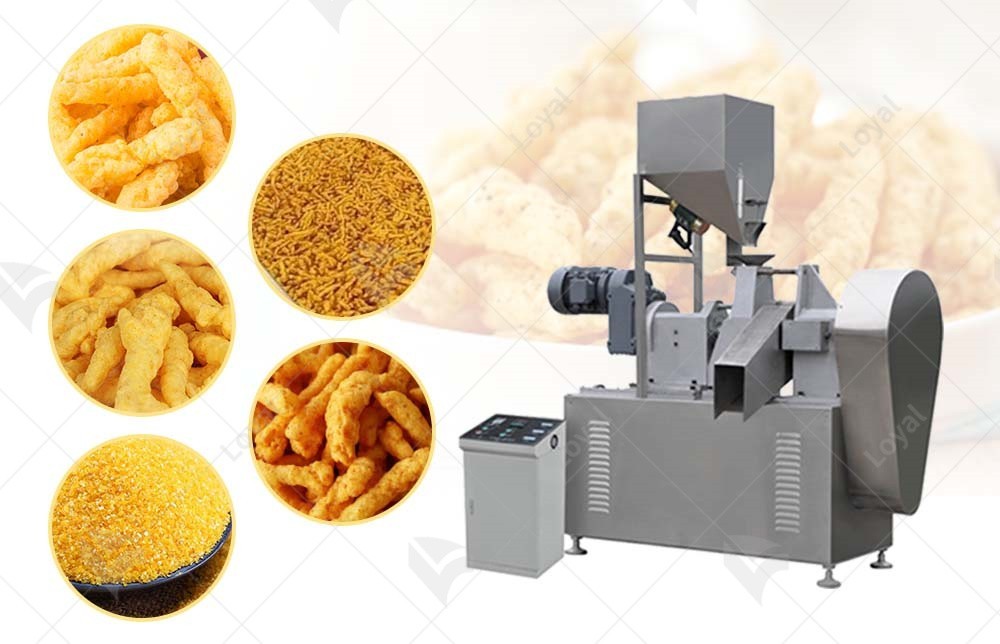
Advanced Feeding and Metering Systems in Snack Extruder Machines
Advanced Feeding and Metering Systems in Snack Extruder Machines
Snack extruder machines are essential equipment in the food processing industry, particularly for the production of various snack foods such as puffed corn, rice cakes, and potato chips. Advanced feeding and metering systems play a crucial role in these machines, ensuring efficient and consistent production.
- Advanced Feeding Systems
Advanced feeding systems in snack extruder machines are designed to automate and optimize the feeding process. These systems typically include automated conveyors, feeders, and hoppers that transport and meter raw materials into the extruder.
|
Automated Conveyors |
Conveyors are used to transport raw materials from storage to the extruder feeder. They are often equipped with sensors and controls to monitor and adjust feed rates in real-time. |
|
Precision Feeders |
Precision feeders, such as gravimetric or volumetric feeders, are used to meter raw materials into the extruder at a consistent rate. These feeders are highly accurate, ensuring that the correct amount of material is fed into the extruder each time. |
|
Hoppers |
Hoppers store raw materials and feed them into the feeder. They are designed to minimize material bridging and bridging, ensuring a smooth and consistent feed into the extruder. |
2.Metering Systems
Metering systems are crucial for maintaining consistent product quality in snack extruder machines. They are responsible for measuring and controlling the amount of raw material fed into the extruder.
|
Gravimetric Metering |
Gravimetric metering systems measure the weight of raw materials fed into the extruder. They are highly accurate and can adjust feed rates in real-time to maintain consistent product quality. |
|
Volumetric Metering |
Volumetric metering systems measure the volume of raw materials fed into the extruder. While they may not be as accurate as gravimetric systems, they are often more affordable and suitable for applications where precision is not as critical. |
3.Benefits of Advanced Feeding and Metering Systems
The implementation of advanced feeding and metering systems in snack extruder machines offers numerous benefits:
|
Increased Efficiency |
Automated feeding and metering systems reduce the need for manual labor, increasing overall production efficiency. |
|
Consistent Product Quality |
Precision feeding and metering ensure that raw materials are consistently fed into the extruder, resulting in consistent product quality. |
|
Reduced Waste |
Advanced systems minimize material bridging and bridging, reducing waste and improving material utilization. |
|
Scalability |
Advanced feeding and metering systems can be scaled to accommodate different production volumes and raw material types. |
4.Challenges and Solutions
While advanced feeding and metering systems offer significant benefits, they also present some challenges:
|
High Initial Cost |
Advanced systems often have a higher initial cost compared to traditional systems. However, the long-term benefits of increased efficiency and reduced waste often offset this cost. |
|
Technical Expertise |
Implementing and maintaining advanced systems requires technical expertise. Manufacturers should provide training and support to ensure operators can effectively use and troubleshoot the systems. |
In conclusion, advanced feeding and metering systems are essential for optimizing the production of snack extruder machines. By automating and optimizing the feeding and metering processes, these systems increase efficiency, maintain consistent product quality, and reduce waste. While they may have a higher initial cost, the long-term benefits make them a worthwhile investment for snack manufacturers.

Integration of Snack Extruder Machines into Automated Production Lines
The integration of snack extruder machines into automated production lines represents a significant advancement in the food processing industry, particularly for the production of puffed snacks such as Cheetos, Kurkure, and corn curls. Below is a detailed analysis of this integration:
1.Advantages and Benefits
①Increased Efficiency and Productivity
Automated production lines reduce manual labor requirements, allowing for faster and more consistent production rates.
Extruder machines, when integrated into automated systems, can operate continuously, minimizing downtime and maximizing output.
②Improved Product Quality
Automated systems ensure that snacks are produced with consistent shape, size, and texture.
The precision of extruder machines, combined with automated controls, results in higher quality products with reduced waste.
③Cost Savings
Automating production reduces labor costs and minimizes the risk of human error.
With consistent quality, there is less need for product rejection or rework, further reducing costs.
④Scalability and Flexibility
Automated production lines can be scaled up or down to meet demand, providing flexibility in production capacity.
Extruder machines can be adapted to produce a variety of snack types and flavors, allowing for product diversification.
2.Integration Process
①Machine Selection and Customization
Choose snack extruder machines that are compatible with automated production lines.
Customize machines to meet specific production requirements, such as capacity, material, and shape.
②Automation and Control Systems
Integrate extruder machines with automated conveyors, sensors, and control systems.
Use programmable logic controllers (PLCs) to automate processes such as material feeding, extrusion, shaping, and packaging.
③Quality Control and Monitoring
Implement quality control measures such as in-line inspection and testing.
Use sensors and cameras to monitor production processes and detect any deviations in real-time.
④Training and Maintenance
Train operators to use and maintain the automated production line.
Establish a maintenance schedule to ensure the long-term reliability of extruder machines and other equipment.
3.Examples of Integrated Systems
①Jinan Saibainuo Technology Development Co., Ltd.
Offers automatic high-quality Cheetos/Kurkure snack food making machines with an extruder machine production line.
Machines have a capacity of 100-300kg/h and are made of stainless steel.
After-sales service includes engineers available to service machinery overseas.
②Shantou Huaxing Machinery Factory Co., Ltd.
Provides snack extruder machines for making puffed snacks from corn or rice.
Machines can be customized and come with a 1-year warranty.
The company has over 40 years of experience in manufacturing snack machinery and has sold machines to over 50 countries.
③Jinan Halo Machinery Co., Ltd.
Offers automated corn puff snack machines with extruders and complete production lines.
Machines have a voltage range of 220v-380v and a power of 30-45kw.
Customization options are available, and prices decrease with bulk purchases.
Conclusion
The integration of snack extruder machines into automated production lines offers numerous benefits, including increased efficiency, improved product quality, cost savings, and scalability. By carefully selecting and customizing machines, implementing automation and control systems, and establishing quality control measures, food processors can achieve optimal production outcomes. Examples from leading manufacturers demonstrate the feasibility and effectiveness of this integration.

Future outlook for snack production with continued technological advancements
The future outlook for snack production with continued technological advancements is promising and filled with exciting possibilities. Below is an analysis of the key trends and developments that are likely to shape the industry in the coming years:
1. Increased Automation and Intelligence
Automated Production Lines: As technology progresses, snack production lines are becoming increasingly automated. This reduces labor costs, improves production efficiency, and ensures consistent product quality.
Smart Manufacturing: The integration of IoT, big data, and AI technologies will enable snack manufacturers to monitor and optimize production processes in real-time, further enhancing productivity and reducing waste.
2. Advanced Material Science and Processing Techniques
Innovative Ingredients: The development of new food ingredients, such as plant-based proteins and functional fibers, will enable the creation of healthier and more sustainable snacks.
Processing Techniques: Techniques such as vacuum frying, microwave drying, and low-temperature baking will be refined to preserve the nutritional value and flavor of snacks while creating unique textures and appearances.
3. Personalization and Customization
Consumer Preferences: With the rise of personalized nutrition and the increasing demand for customized snacks, manufacturers will need to offer a wider range of options to cater to diverse consumer preferences.
On-Demand Production: Advances in technology will enable manufacturers to produce small batches of snacks on-demand, reducing inventory costs and allowing for greater flexibility in product offerings.
4. Sustainability and Environmental Awareness
Eco-Friendly Packaging: The use of recyclable, biodegradable, and compostable packaging materials will become more prevalent as consumers become more environmentally conscious.
Regenerative Agriculture: Practices such as regenerative agriculture, which focus on soil health and biodiversity, will gain traction as manufacturers seek to source ingredients in a more sustainable manner.
5. Globalization and International Trends
International Ingredients: The globalization of the food industry will lead to the incorporation of international ingredients and flavors into snack production, appealing to consumers who seek novel and exotic experiences.
Export Markets: As snack manufacturers become more sophisticated in their production techniques and ingredient sourcing, they will have the opportunity to expand into international markets, increasing their global footprint.
6. Health and Wellness Focus
Functional Snacks: The trend towards healthier eating will continue to drive the development of functional snacks that offer specific health benefits, such as improved digestion, enhanced energy levels, or cognitive function.
Clean Label: The demand for clean-label snacks, which are free from artificial additives and preservatives, will continue to grow as consumers become more informed about the ingredients in their food.
7. Integration of Technology and Creativity
3D Printing: The use of 3D printing technology in snack production will enable manufacturers to create intricate designs and personalized snacks that cater to consumer preferences for novelty and uniqueness.
Innovative Flavor Profiles: Advances in flavor extraction and encapsulation technologies will allow manufacturers to create snacks with bold, unique, and long-lasting flavors that appeal to adventurous eaters.
In conclusion, the future of snack production is bright, with continued technological advancements driving innovation, efficiency, and sustainability. Manufacturers who embrace these trends and stay ahead of the curve will be well-positioned to succeed in an increasingly competitive market.

Reference
The following are five authoritative foreign literature websites in the field of Industrial food machinery:
1. Food Engineering Magazine
Website: https://www.foodengineeringmag.com/
2.Food Processing Magazine
Website: https://www.foodprocessing.com/
3.Journal of Food Engineering
Website:https://www.journals.elsevier.com/journal-of-food-engineering
4. Food Manufacturing Magazine
Website:https://www.foodmanufacturing.com/
5. International Journal of Food Science & Technology
Website:https://onlinelibrary.wiley.com
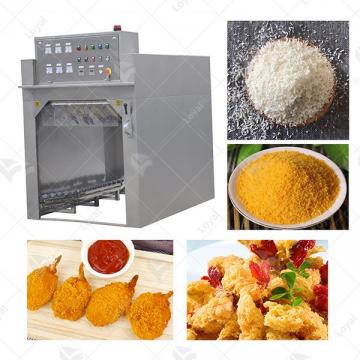 Commercial Japanese Panko Bread Crumb Grinder Machine
Commercial Japanese Panko Bread Crumb Grinder Machine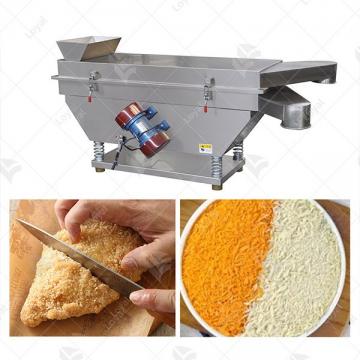 Japanese Bread Crumbs Processing Line
Japanese Bread Crumbs Processing Line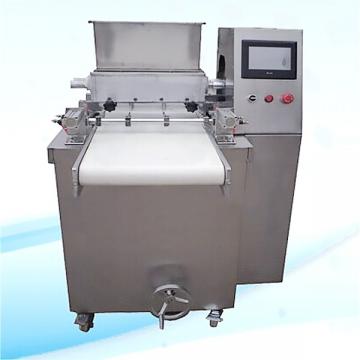 Automatic Cookies Making Machines
Automatic Cookies Making Machines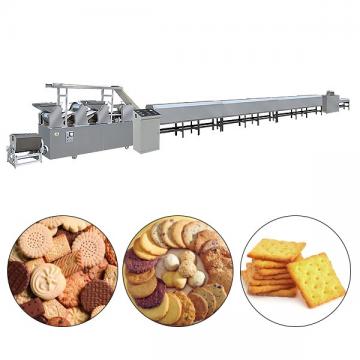 Fully Automatic Biscuit Making Machines
Fully Automatic Biscuit Making Machines